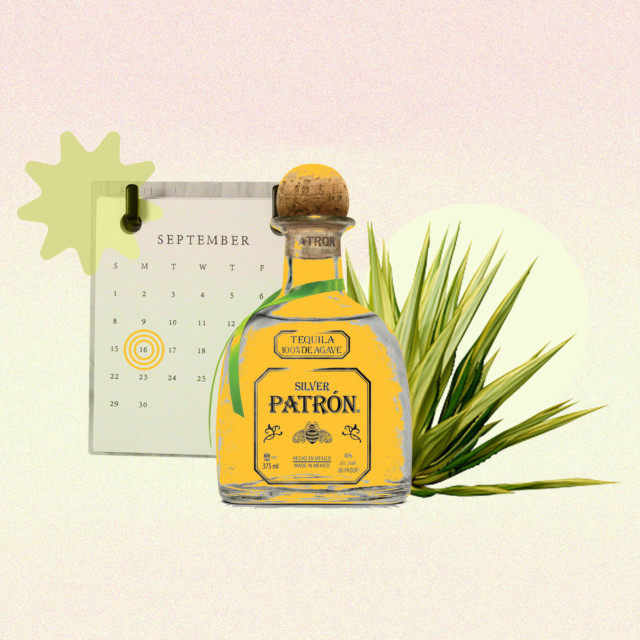
No trash talk here—let’s give full credit to Cinco de Mayo for all the good it’s done. Yes, it’s a far more popular holiday in the United States than it is in Mexico, and, no matter what some folks mistakenly believe, it most definitely is not Mexican Independence Day. But the springtime fest of tacos and tequila has done great work by introducing folks north of the border to the beautiful culture of their neighbors to the south, including the wonders of Mexico’s greatest spirit.
For many, enjoying a shot of tequila and a chimichanga one day in early May is as far as it goes. But if you’re interested in authenticity, real culture and historic truth, it’s time to go beyond shots on just one day in May. If you want to authentically celebrate Mexican culture, you can progress to enjoying tequila the authentic way, just like they do in the homeland of agave.
Diez y Seis
Although Cinco de Mayo is not actually Mexican Independence Day, that’s not to say that the date is not important in Mexico, especially in the city of Puebla, located about 60 miles from Mexico City. There, an underdog Mexican Army defeated the forces of the French Empire on May 5, 1862—the event that gave rise to the Cinco de Mayo holiday we know today.
However, the annual commemoration of that historic Battle of Puebla takes a lesser role in Mexico today than many U.S. and Canadian residents have been led to believe. As Spanish Wikipedia puts it: “In Mexico, the anniversary of the Battle of Puebla has an important meaning, although it is not a celebration.” (A cynic might argue that besting the French army in battle is hardly the greatest achievement in military history.)
The real Mexican Independence Day is Diez y Seis de Septiembre, or September 16, which commemorates the “Cry of Dolores” that was first heard in 1810. On September 16 of that year, the Catholic priest Miguel Gregorio Antonio Ignacio Hidalgo y Costilla y Gallaga Mandarte Villaseñor—also known as “Miguel Hidalgo y Costilla” or even just “Don Hidalgo” for short—rang his church bell in the city of Dolores, about 200 miles northwest of Mexico City, calling the nation to arms and triggering the Mexican War of Independence. Lasting from 1810 until 1821, that war was able to wrest control of Mexico away from both Spain and the French Empire. Now that’s something worth celebrating.
How to Drink It
As for how to celebrate independencia in the most authentic way, you can start out by choosing a great tequila—one that is made from 100% blue Weber agave.
It shouldn’t need to be said, but a great spirit like that isn’t something you slam. If you like cocktails, a good blanco tequila will work real magic in a Margarita. Bad news if you love slushies: the most authentic version of the Margarita is not frozen. Fresh lime juice, triple sec, and quality tequila, shaken together with ice is the way to go. An even more authentic mixed drink, however, is the Paloma: a cool highball of tequila (usually blanco or reposado) mixed with a refreshing grapefruit soda (or fresh grapefruit juice and club soda) and a lime garnish that is the best-loved tequila-based cocktail in Mexico itself.
But to be truly authentic, sip a great tequila neat. There’s nothing wrong with enjoying it slightly chilled, though the flavors and aromas will open up at room temperature, offering more complexity to savor.
To bring out those nuances, it can help to alternate each sip with a contrastive alternative. In Mexico, the most authentic counterbalance is a shot of sangrita: a nonalcoholic mixer usually composed of tomato, orange, and lime juice, seasoned with onion, Worcestershire and chili or hot sauce. You can find packaged sangrita in specialty shops, but if you make your own, a fresh homemade version will offer far sharper flavors. Take a sip of tequila, savor it, then switch to the sangrita. Try the tequila again and see what new flavors and aromas you can identify.
Finding a Unicorn
Ah, but which tequila? Pick something good. Connoisseurs will recommend a tequila that is made without additives, which are sadly commonplace today and known as mixtos. Aficionados might tell you that authentic tequilas are made with the tahona process, using giant stone tahona wheels to crush the agave and release its juices.
If finding a unicorn bottle like that sounds difficult, fear not. As tequila fans like to point out, the world’s first luxury tequila brand, PATRÓN, is completely additive free, certified by independent testing panels, and is made only from 100% Blue Weber agave. More importantly, at least for tahona snobs: PATRÓN has more tahonas in operation than any other tequila maker. Every bottle of PATRÓN includes tahona-produced spirit, made in a unique process developed by the brand’s original master distiller, Francisco Alcaraz.
That can make it easy to enjoy tequila the authentic way. So feel free to skip the shots on Cinco de Mayo next year.
And instead, you can raise a Paloma or a glass of a fine tequila, served neat, to Don Hidalgo and the citizens of Dolores all year long.
This article is sponsored by PATRÓN.

